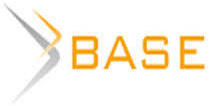Simulation of text restoration of the name in the digital environment
The article examines the phenomenon of the digital name as an element of sociocode in the context of virtual communication. The similarity between the mythological perception of the name in traditional societies and its functioning in the digital environment is analyzed. Through the prism of M.K. Petrov’s and L. Lévy-Bruhl’s concepts, the role of a nickname as a “name text” that ensures identity simulation in social networks is revealed. Special attention is paid to the mechanisms of name reservation, their connection with linguistic taboos and ritual practices. It is proved that the digital name performs the function of a communicative “lightning rod”, reducing the depth of personal content to the level of visual-textual projection.

















While nobody left any comments to this publication.
You can be first.
Baudrillard, J. (2000), Simvolicheskiy obmen i smert [Symbolic Exchange and Death (L'échange symbolique et la mort)], Translated from French by Zenkin, S. N., Dobrosvet, Moscow, Russia. (in Russ.).
Foucault, M. (2012), Arkheologiya znaniya [Archaeology of knowledge (L'archéologie du savoir)], Translated from French by Rakova, M. B. and Serebryannikova, A. Yu., Humanitarian Academy, St. Petersburg, Russia. (in Russ.).
Lévy-Bruhl, L. (2020), Pervobytnoye myshleniye [Primitive Thinking (La mentalite primitive)], Translated from French by Sharevskaya, B. I., Academic Project, Moscow, Russia. (in Russ.).
Lotman, Yu. M. (2000), Semiosfera, [Semiosphere], Iskusstvo-SPB, St. Petersburg, Russia. (in Russ.).
Petrov, M. K. (2004), Yazyk, znak, kultura [Language, sign, culture], Editorial URSS, Moscow, Russia. (in Russ.).